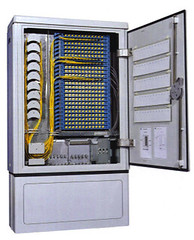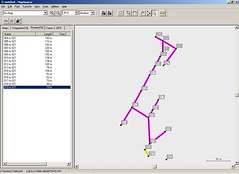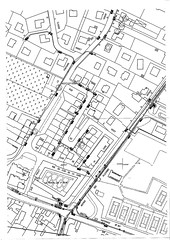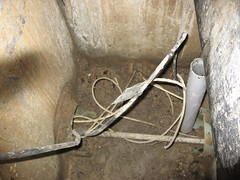Now if only my line weren't dead so I could enjoy it.
My DSL connection went down yesterday at noon and has been out for 36 hours. My DSL provider (Free) is actually very stable but the line speeds have been very slow. My cable connection with Numericable is just the opposite - fast when it works but out of order more than 50% of the time.
If DSL goes down it's because they are doing something at the exchange. Any problem in the past I've had has been an inadvertent disconnection by FT. I knew something was up when my neighbor across the street came by with his Freebox to test it on my line because his line was down too.
I waited for my cable connection to come back up and then quickly hopped online to check the details of my line. What I found was great news. My line has been shortened by connecting to the new exchange. The bad news is something is wrong with the connection.
Then today I was driving home and saw the large France Telecom manhole at the edge of the village open with workers inside. My son and I walked down and talked to the workers, taking a few pictures of the manholes.

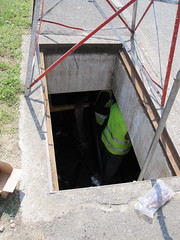
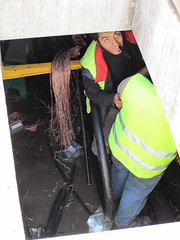
The next person I encountered we knee-deep in water in a second manhole working to reconnect some of the thousands of lines which have to be rerouted.

Then I walked the rest of the 797 metres and arrived in front of the actually exchange, which they call a NRA(HD). The France Telecom person there was very helpful and answered my questions about the fibre routing and how the exchange was upgraded. Simple telephone lines are still connected to the old exchange but any DSL lines in our village now terminate in the new village exchange.
I was able to snap a few pictures of the exchange with the door open from the fence. You can see the patch panels on the right but the DSLAM's aren't visible in the shot. They are on the left (Free and Neuf).


I was finally able to get through to Free to tell them my line was down. The earliest they will send a technician is in 7 days. That's a long time to go without our fixed line...


